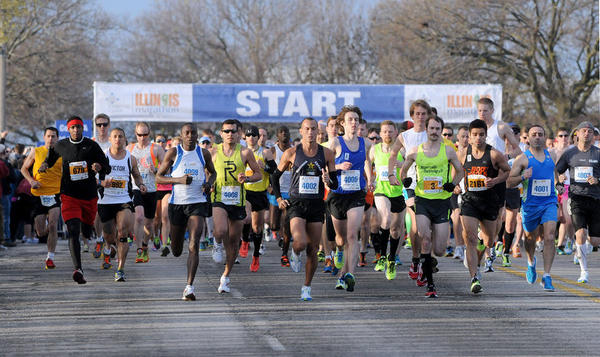Charity events in any form are always popular, but of recent, people and organizations are shifting from the usual fund raising dinners to more interactive events such as walks and runs. Organizing a marathon can be a very enjoyable and rewarding experience but requires adequate planning as well. Below are some of the most important steps to consider when planning a marathon.

#1. Route
It is important to take the time to carefully map out the route your participants will be following. When surveying the road, pay attention to elevation gain, traffic, road conditions, and any other factors that could potentially make participating in your event strenuous for the less physically able. Some common route distances for charity events are 5km, 10km, half etc
#2. Safety
After deciding on the route for the race, the next question you should ask yourself is ‘How safe is it? Is the road undergoing any form of construction? How busy is that area? Are the walking lanes wide enough to keep participants away from the traffic?’ Asking yourself these questions will help you chart your course around any potential hazards and allow your participants to have a fun, care-free experience on the day of the event.
#3. Resources
Talking of resources, you will need to put together different things like refreshments (mostly water and snacks), flags or banners for start and finish areas, rope for course-marking, A P. A. system (usually in a bus that slowly runs behind the participants), T-shirts, medals, stage, first aid kit, etc. Some of the things you need can be rented to reduce expenses.
#4. Legal authorities
After choosing your route, you will need to find out if you need permission to use that particular place. You may have to contact the local police or the owners, if it’s a private land. Make sure there are no other events planned on your route on the event day. The last thing you want is to start your event and then get stopped by the police or owners because you failed to get permission. Remember that regulations vary depending on the state, so you might want to start early as some procedures are time-consuming. You will also need permission from the charity to use their name and logo.
#5. Sponsorship
After you’ve set up your budget, you’ll need spend some time contacting local businesses or individuals to see if they would be willing to support the event. Some might wish to help by providing products, services or cash that might help to improve the quality of your race.
#6. Event marketing
Event marketing is all about spreading the word. There are so many ways you can advertise your event starting from putting it on your website, by mail, TV, radio, newspaper advertisements and signs posted around town. Advertising on social media is one of the most effective means of getting the word out these days. Most of the social media channels are free and a great platform to spread the message about your event, and of course, tell as much people as possible about your event.
#7. Race participants
Getting people to volunteer for the race can be quite simple as long as they understand that it’s for charity. You can work with youth organizations, students from schools, etc. Try to open registration as soon as possible and make it as easy as possible.
On the day of the marathon, arrive as early as possible and make sure that nothing unexpected comes up. Go through your event checklist and make sure that everything is in order. Be sure to start on time and finish on time. At the end of it all, award medals to all those who finished race and also get gifts for those who started but could not finish. Finally, send thank you notes to sponsors and volunteers and calculate the total amount of funds raised from all sources (minus expenses) and submit the funds to the organization.
A charity walk or run is not only a healthy way for your participants to raise money for a good cause, but also a very visible way of publicizing your charitable cause to the community.
So straddle on your shoes and get on with that charitable marathon!
